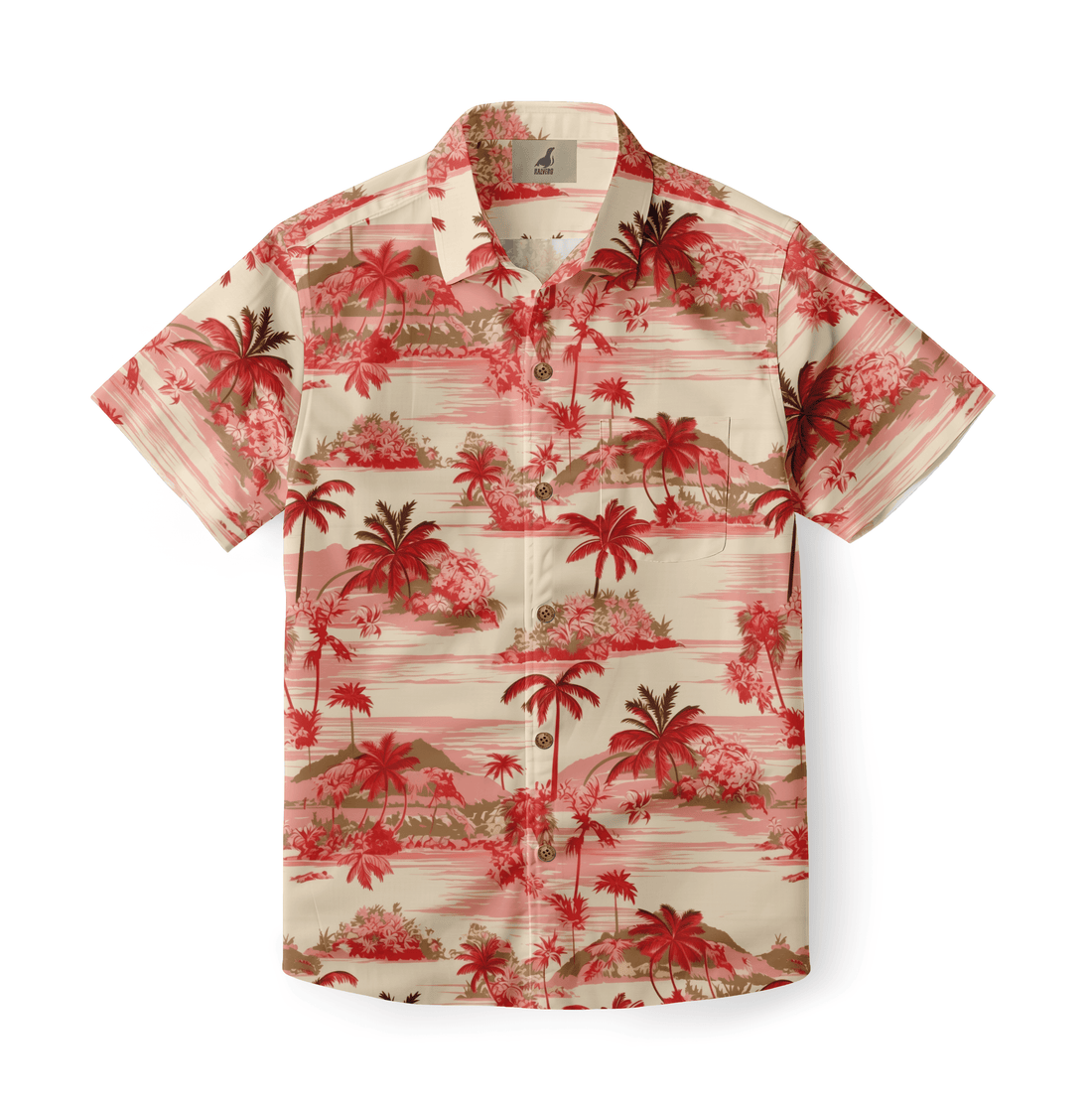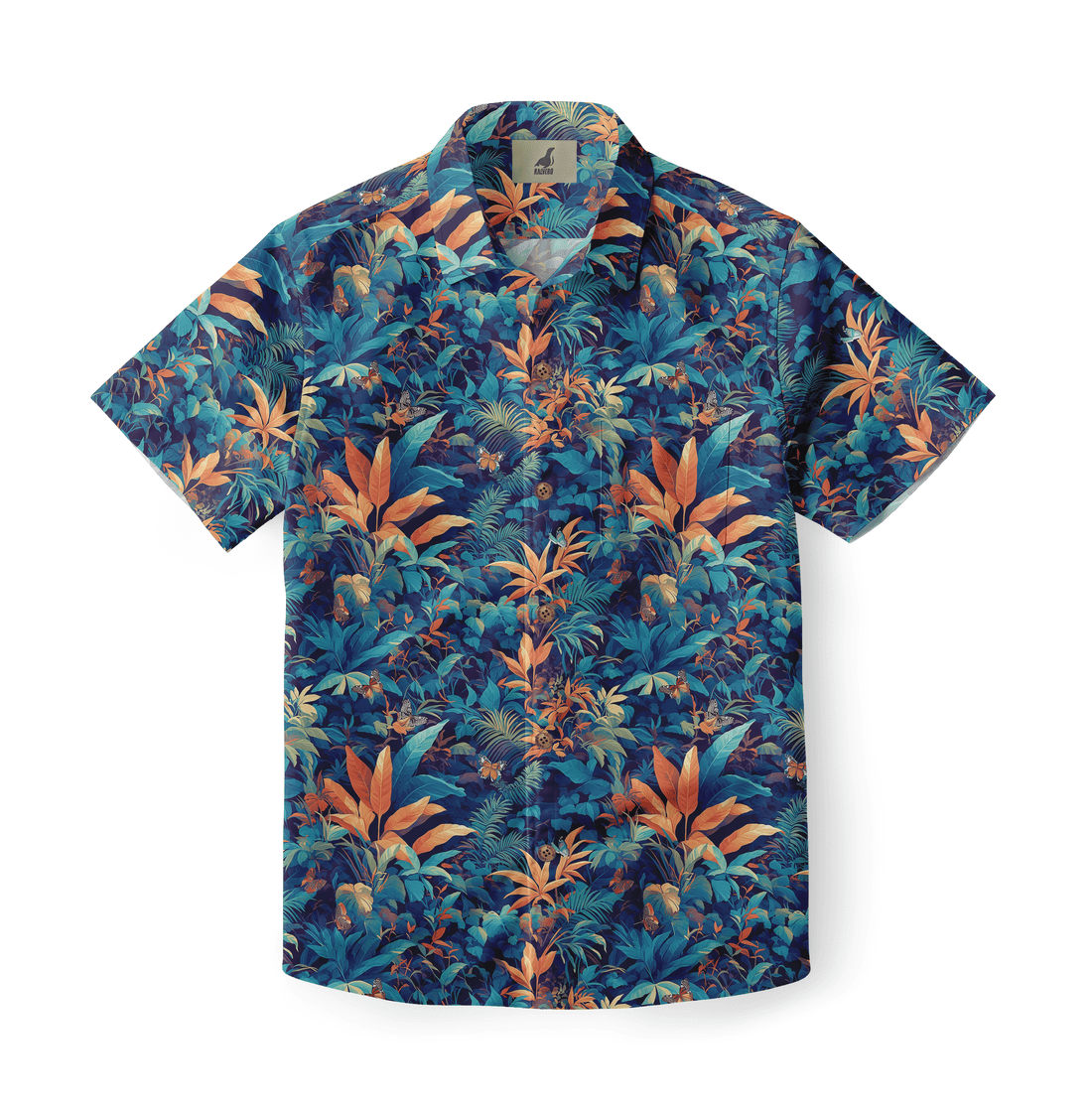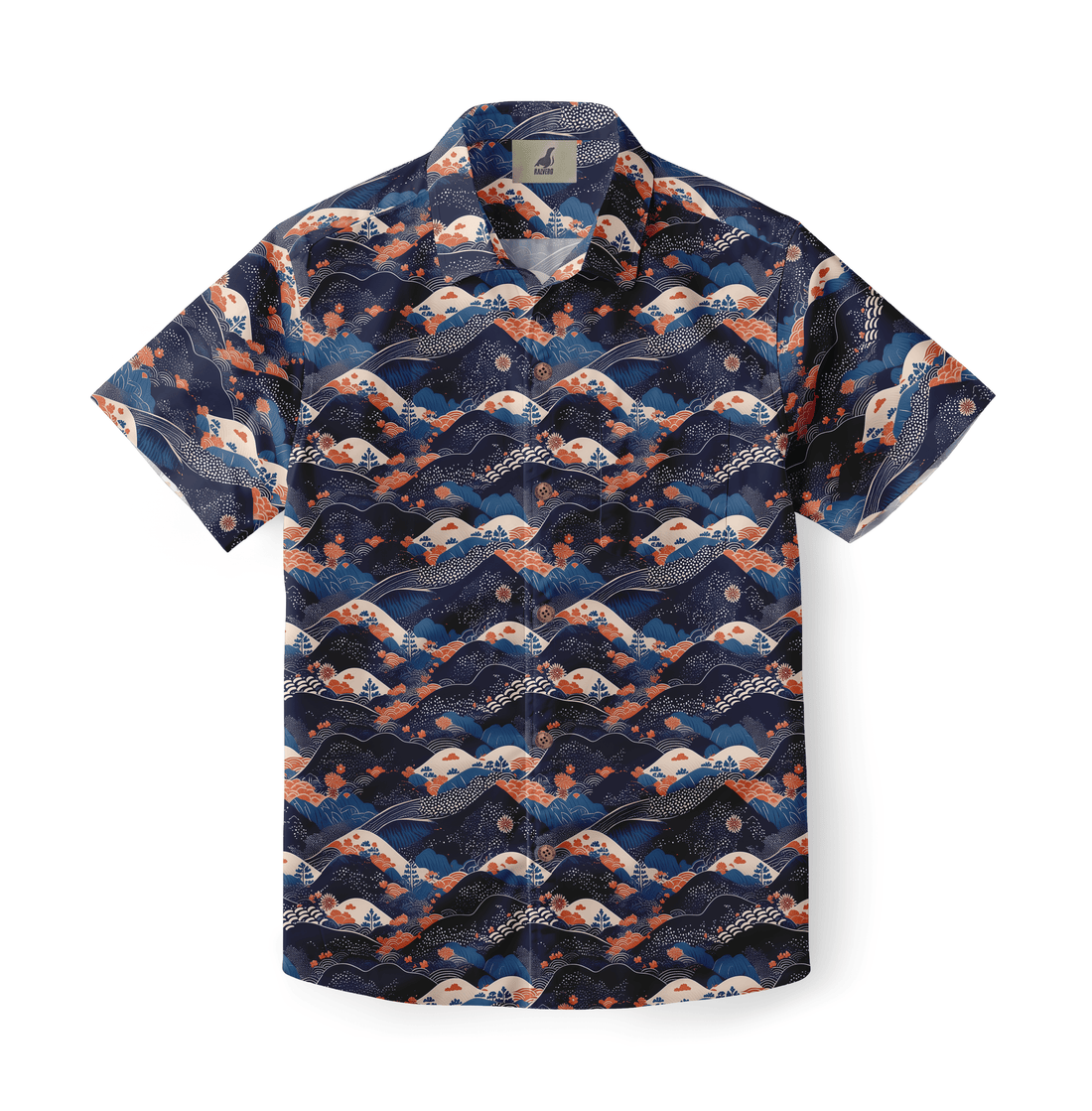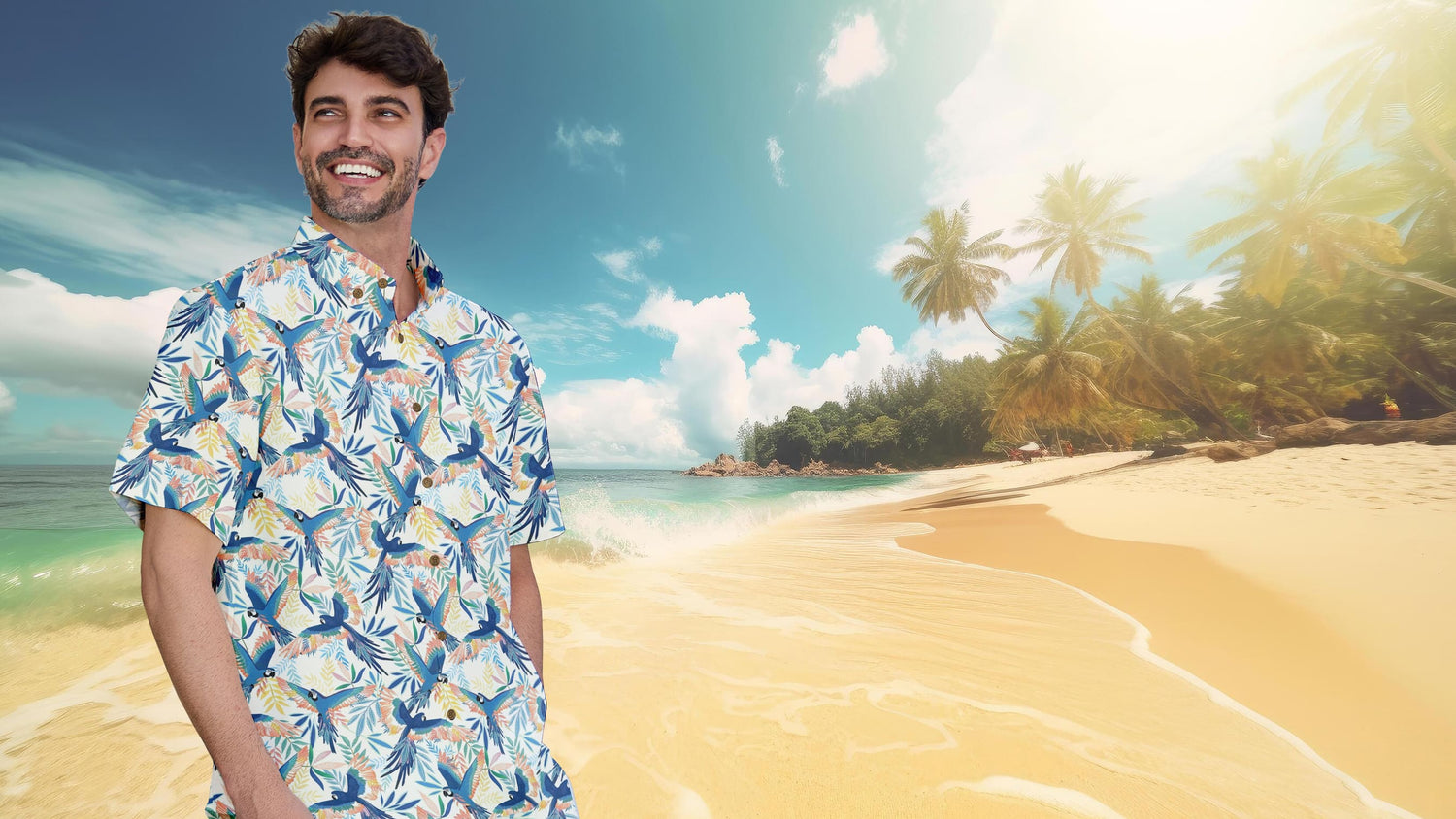The question of whether Hawaiian shirts are business casual is a common one in today's evolving workplace. As dress codes become more flexible, understanding the nuances of office-appropriate attire is crucial. This article delves into the considerations surrounding Hawaiian shirts in professional settings, offering insights into when and how these vibrant garments can fit into a business casual environment. We will explore the factors that determine their suitability, from industry norms to company culture, and provide practical styling tips to ensure a polished appearance. While traditionally associated with leisure and vacation, certain styles of Hawaiian shirts can indeed be integrated into a modern business casual wardrobe, provided careful attention is paid to fabric, pattern, and overall presentation. This guide aims to clarify the boundaries and possibilities for incorporating Hawaiian shirts into your professional life, ensuring you maintain a respectful yet personal style.
Are Hawaiian Shirts Business Casual? Understanding Modern Workplace Dress Codes
To address the question, "Are Hawaiian shirts business casual?" it is essential to first understand the contemporary landscape of workplace dress codes. The traditional rigid rules of corporate attire have significantly softened over the past few decades, giving way to more relaxed and diverse interpretations of professional dress. Many companies, especially in creative industries or tech sectors, have adopted a more flexible approach, prioritizing comfort and individual expression while still maintaining a level of professionalism. Business casual, once a clearly defined category, now encompasses a wide spectrum of clothing choices, making it a somewhat ambiguous term. It generally implies a neat, polished appearance that is less formal than traditional business attire but more refined than casual wear.
This shift is driven by a desire to foster a more comfortable and productive work environment, recognizing that employees often perform better when they feel at ease. However, the interpretation of business casual can vary greatly from one organization to another, and even within different departments of the same company. Factors such as industry, company culture, client-facing roles, and geographical location all play a significant role in defining what is considered acceptable. Therefore, before considering if Hawaiian shirts are business casual, one must first gauge the specific unwritten rules and expectations of their particular workplace. This foundational understanding is key to navigating the modern office dress code successfully and making appropriate sartorial choices.
The Evolution of Business Casual Attire
The concept of business casual attire has undergone a significant evolution, directly impacting the discussion of whether Hawaiian shirts are business casual. Historically, workplaces demanded formal wear, with suits and ties for men and conservative dresses or skirts for women being the norm. The shift began in the 1980s and 1990s, driven by a desire for greater comfort and a more relaxed atmosphere in the office. Companies started implementing "casual Fridays," allowing employees to wear less formal clothing one day a week. This initiative proved popular and gradually expanded, leading to the widespread adoption of business casual as a daily dress code in many industries. The definition of business casual itself has broadened over time.
Initially, it might have meant khakis and polo shirts; today, it can include anything from tailored jeans and blazers to smart casual dresses. This evolution reflects a changing corporate culture that values flexibility, employee well-being, and a less hierarchical structure. The rise of tech companies, known for their relaxed environments, further accelerated this trend, pushing the boundaries of what is considered acceptable office wear. This ongoing transformation means that garments once strictly confined to leisure, like certain styles of Hawaiian shirts, are now being re-evaluated for their potential place in a professional setting. The key lies in understanding the current interpretation of business casual within a specific context, as it continues to adapt to modern workplace dynamics and employee preferences. This historical context is vital for assessing the current suitability of various clothing items.
When Hawaiian Shirts Work in Professional Settings
Determining when Hawaiian shirts are business casual requires a careful assessment of the professional setting. While they are not universally appropriate for all workplaces, there are specific environments and occasions where a well-chosen Hawaiian shirt can be a stylish and acceptable choice. The key is to distinguish between the loud, tourist-style shirts and their more subdued, sophisticated counterparts. In creative industries such as advertising, design, or media, where personal expression is often encouraged, a tasteful Hawaiian shirt can fit seamlessly into the business casual dress code. These environments typically value individuality and a more relaxed aesthetic, making them more receptive to less conventional attire. Similarly, in regions with warm climates, like Hawaii itself or parts of California and Florida, Hawaiian shirts are often considered a standard part of professional wear, especially on "Aloha Fridays." The cultural context plays a significant role in their acceptance.
Furthermore, company culture is a crucial factor. A startup with a laid-back atmosphere is more likely to embrace Hawaiian shirts than a traditional law firm or financial institution. Even within a single company, the appropriateness can vary. For internal meetings or casual workdays, a Hawaiian shirt might be perfectly fine, whereas for client-facing roles or important presentations, a more conservative choice would be advisable. The context of the day's activities is paramount. By carefully considering the industry, location, company culture, and specific daily responsibilities, one can make an informed decision about whether a Hawaiian shirt is a suitable and professional choice for the office.
Are Hawaiian Shirts Business Casual? Industry-Specific Guidelines
The question of "Are Hawaiian shirts business casual?" is heavily influenced by industry-specific guidelines. What is acceptable in one sector might be entirely inappropriate in another. Understanding these nuances is crucial for making informed wardrobe choices that align with professional expectations. Different industries have varying levels of formality and cultural norms regarding dress, which directly impact the suitability of a Hawaiian shirt in a business casual context.
- Creative and Tech Industries: In fields like advertising, graphic design, software development, and startups, dress codes are typically more relaxed. Here, Hawaiian shirts with subtle patterns or muted colors can often be integrated into a business casual look. The emphasis is on creativity and comfort, allowing for more personal expression.
- Hospitality and Tourism: Especially in regions with a strong tourism industry or warm climates (e.g., Hawaii, Florida, Caribbean), Hawaiian shirts are not only acceptable but often encouraged, particularly for roles that interact with guests in a relaxed setting. They contribute to the local ambiance and brand identity.
- Traditional Corporate Environments: Industries such as finance, law, banking, and conservative corporate settings generally maintain stricter dress codes. In these environments, Hawaiian shirts are almost never considered business casual and would be deemed unprofessional. A more traditional suit and tie or classic business casual attire (e.g., blazers, dress shirts, slacks) is expected.
- Education and Non-Profits: Dress codes in these sectors can vary widely. In some educational settings, a Hawaiian shirt might be acceptable for a casual Friday or during summer months, especially if it's a more subdued design. However, for formal events or parent-teacher conferences, more traditional attire would be necessary.
- Retail and Sales (Non-Luxury): Depending on the brand image and target clientele, some retail and sales environments might permit Hawaiian shirts, especially if the brand promotes a relaxed or casual image. However, in luxury retail or high-stakes sales, a more polished appearance is usually required.
These industry-specific guidelines highlight that there is no one-size-fits-all answer to whether Hawaiian shirts are business casual. Professionals must assess their specific industry's norms and err on the side of caution if unsure. When in doubt, observing what colleagues and superiors wear is always the best approach. The key is to project an image that is both appropriate for the role and respectful of the company's culture, ensuring that one's attire supports, rather than detracts from, their professional credibility. This careful consideration ensures that the choice of wearing a Hawaiian shirt is a strategic one, aligning with the expectations of the professional environment.
Styling Hawaiian Shirts for the Office
For those workplaces where Hawaiian shirts are business casual, proper styling is paramount to ensure a polished and professional appearance. It's not enough to simply wear the shirt; how you pair it with other garments and accessories makes all the difference in elevating it from casual wear to office-appropriate attire. The goal is to balance the shirt's inherent vibrancy with more subdued and structured elements, creating a harmonious and respectful ensemble. Thoughtful styling can transform a potentially informal item into a smart and acceptable part of your professional wardrobe.
- Choose Subtler Patterns and Colors: Opt for Hawaiian shirts with smaller, more intricate patterns or those with muted color palettes. Avoid overly bright, loud, or cartoonish prints. Classic floral designs or abstract patterns in blues, greens, or earth tones are generally safer choices for the office.
- Select Quality Fabrics: Prioritize shirts made from high-quality materials like cotton, linen, or a refined rayon blend. These fabrics tend to drape better and look more sophisticated than cheaper, synthetic alternatives. A crisp, well-maintained fabric instantly elevates the shirt's appearance.
- Pair with Tailored Bottoms: Combine your Hawaiian shirt with tailored trousers, chinos, or a smart skirt. Avoid shorts, distressed jeans, or overly casual bottoms. Darker colors like navy, charcoal, or black for your trousers or skirt will provide a professional contrast to the shirt's pattern.
- Consider Layering: For a more refined look, wear a plain, solid-colored t-shirt or tank top underneath the Hawaiian shirt and leave the shirt unbuttoned. Alternatively, a lightweight blazer or a structured cardigan can instantly elevate the outfit, adding a layer of formality and sophistication.
- Footwear Matters: Complete your outfit with appropriate footwear. Loafers, dress shoes, clean sneakers (if acceptable in your workplace), or smart sandals (for women) are suitable. Avoid flip-flops or overly casual beach footwear.
- Accessorize Thoughtfully: Keep accessories minimal and professional. A classic watch, a simple belt, or understated jewelry can complement the look without distracting from it. Avoid overly flashy or beach-themed accessories.
By adhering to these styling tips, you can confidently incorporate Hawaiian shirts into your business casual wardrobe, demonstrating that they can indeed be office-appropriate. The key is to approach the Hawaiian shirt as a statement piece that needs to be grounded by more traditional and polished elements. This thoughtful combination ensures that your attire is both comfortable and respectful of the professional environment, allowing you to express personal style while maintaining a suitable workplace image. The careful selection of accompanying pieces is crucial for achieving the desired professional aesthetic, proving that Hawaiian shirts can be business casual when styled correctly.
Fabric and Pattern Considerations for Professional Wear
When evaluating if Hawaiian shirts are business casual, the choice of fabric and pattern is a critical determinant of their suitability for professional wear. Not all Hawaiian shirts are created equal; some are designed for casual beach outings, while others possess a more refined quality that can be appropriate for an office setting. Understanding these distinctions is key to making an informed choice that aligns with workplace expectations. The right fabric and pattern can elevate a Hawaiian shirt from a purely recreational item to a stylish component of a business casual wardrobe.
| Element | Description | Contribution to Summer/Relaxation Symbolism |
|---|---|---|
| Fabric (Rayon, Cotton, Silk) | Lightweight, breathable, and soft materials that allow for air circulation and moisture wicking. | Provides physical comfort in heat, enhancing the feeling of ease and leisure. |
| Loose Fit | Generous cut that prevents clinging to the body, promoting airflow and unrestricted movement. | Embodies a carefree attitude, freedom from formal constraints, and a relaxed silhouette. |
| Short Sleeves | Allows for maximum arm movement and reduces heat retention. | Practical for warm weather activities, reinforcing the casual, active summer vibe. |
| Open Collar | Often a camp collar or Cuban collar, designed to be worn open for comfort and a laid-back look. | Contributes to the informal, unbuttoned aesthetic associated with vacation and relaxation. |
This table provides a clear comparison of the elements that distinguish an office-appropriate Hawaiian shirt from one that is better suited for leisure. For a professional environment, it is crucial to select shirts made from high-quality fabrics that convey a sense of sophistication and durability. Cotton and linen offer a crisp, clean look, while silk and refined rayon blends provide a more luxurious drape. The pattern should be understated and tasteful, with smaller prints and muted colors being the safest bet. Loud, garish patterns or novelty themes are generally best avoided in a business casual setting.
The fit of the shirt is also important; it should be well-tailored and presentable, avoiding extremes of being too tight or too baggy. Finally, attention to construction details, such as quality stitching and well-aligned patterns, can significantly impact the shirt's overall professionalism. By carefully considering these fabric and pattern elements, you can confidently select a Hawaiian shirt that is both stylish and appropriate for the workplace, successfully navigating the nuances of business casual attire. This discerning approach is essential for integrating a traditionally casual garment into a professional wardrobe.
Are Hawaiian Shirts Business Casual? Company Culture Factors
When assessing whether Hawaiian shirts are business casual, company culture emerges as one of the most significant, albeit often unwritten, factors. Every organization possesses a unique cultural DNA that dictates its norms, values, and, crucially, its dress code expectations. A deep understanding of this culture is far more important than any universal rule when deciding on appropriate office attire. What might be perfectly acceptable in a laid-back tech startup could be a serious misstep in a traditional law firm. The unspoken rules of dress are often learned through observation and immersion within the workplace environment.
Companies that prioritize innovation, creativity, and a relaxed atmosphere are generally more open to diverse and expressive clothing choices, including certain styles of Hawaiian shirts. Conversely, organizations with a more conservative or client-facing culture will likely expect a more traditional and formal approach to business casual. It is always advisable to observe what senior management and long-standing employees wear. Their attire often provides the clearest indication of the company's true dress code. Furthermore, if you are new to a company, it is prudent to err on the side of caution and dress more conservatively until you have a clear grasp of the prevailing cultural norms. This proactive approach demonstrates respect for the workplace environment and its established practices. Ultimately, the question of "Are Hawaiian shirts business casual?" is often answered by the specific cultural context of your employer, making cultural awareness a key component of professional presentation.
Alternative Professional Summer Attire
While the focus here is on whether Hawaiian shirts are business casual, it is also beneficial to consider alternative professional summer attire options that offer comfort and style without ambiguity. For those workplaces where Hawaiian shirts might still be too casual, or for individuals who prefer more traditional options, a range of garments can provide a similar level of comfort and appropriateness for warmer months. Exploring these alternatives ensures that one can maintain a professional appearance while staying cool and comfortable during the summer season. These options provide versatility and can be easily integrated into an existing business casual wardrobe. Linen shirts offer a sophisticated yet relaxed look and come in various solid colors or subtle patterns.
Polo shirts made from quality fabrics like Pima cotton or performance blends are always a safe bet. Lightweight blazers in breathable fabrics such as linen, cotton, or seersucker can instantly elevate a simple shirt and trousers combination. Chinos and khakis are versatile trousers that offer a comfortable and polished alternative to traditional dress pants. Breathable dress shirts made from lighter weaves like poplin or pinpoint oxford are also excellent choices. For women, light, flowing dresses or skirts in professional lengths and patterns, paired with a cardigan or light jacket, can be ideal for summer office wear. These alternatives provide ample opportunities to create a professional yet comfortable summer wardrobe, ensuring that attire is always appropriate for the setting.
Regional and Cultural Considerations
The appropriateness of Hawaiian shirts as business casual attire is also heavily influenced by regional and cultural considerations. Dress codes are not universal; they often reflect local customs, climate, and historical context. What is considered acceptable in one part of the world or even one region of a country might be entirely different elsewhere. This geographical and cultural variance adds another layer of complexity to the question of whether Hawaiian shirts are business casual. In Hawaii, for instance, the Aloha shirt is deeply embedded in the local culture and is widely accepted as formal business attire, particularly on "Aloha Fridays" and for many professional events. It is a symbol of local pride and a practical garment for the warm climate. This cultural acceptance means that wearing a Hawaiian shirt in a business setting in Hawaii is not only common but often expected. Similarly, in other tropical or subtropical regions, where the climate dictates lighter, more breathable clothing, the perception of what constitutes business casual can be more relaxed, potentially making room for certain styles of Hawaiian shirts. Conversely, in more conservative business hubs in temperate climates, such as New York or London, the traditional suit and tie or a very strict interpretation of business casual would be the norm, and a Hawaiian shirt would likely be considered inappropriate for any professional setting. Even within the United States, regional differences can be observed; a tech company in Silicon Valley might have a more lenient dress code than a financial institution in the Northeast. Therefore, when considering if Hawaiian shirts are business casual, it is crucial to factor in the specific regional and cultural context of the workplace.
Building a Professional Wardrobe with Tropical Elements
For those who appreciate the relaxed aesthetic of tropical wear and wish to integrate it into their professional life, building a business casual wardrobe with tropical elements is entirely possible, even if Hawaiian shirts are not business casual in their most vibrant form. This approach focuses on incorporating subtle nods to tropical style while maintaining a polished and office-appropriate appearance. It's about finding a balance between personal preference and professional decorum, allowing for a touch of summer flair without compromising on formality. The key is to select pieces that evoke a tropical feel through their fabric, color, or subtle pattern, rather than overt imagery.
Consider incorporating linen or cotton blend shirts in lighter, breathable fabrics. These materials inherently convey a relaxed, summer vibe while remaining professional. Opt for solid colors like light blues, greens, or even muted pastels that subtly hint at a tropical palette. If patterns are acceptable, choose those that are abstract, geometric, or very small-scale, avoiding large, bold floral or scenic prints. For trousers, light-colored chinos or linen pants can replace heavier wool or dark denim, providing comfort and a seasonal feel. Women can explore professional dresses or skirts in breathable fabrics with subtle tropical-inspired prints or colors. Accessories can also play a role; a watch with a canvas strap, a subtle bracelet, or even a pair of polished loafers in a lighter shade can add a touch of summer. The idea is to draw inspiration from the comfort and lightness of tropical wear, translating it into a sophisticated business casual context.
Common Mistakes to Avoid
When attempting to integrate Hawaiian shirts into a business casual wardrobe, or any professional setting, there are common mistakes that can undermine your efforts and lead to an unprofessional appearance. Being aware of these pitfalls is just as important as knowing how to style them correctly. Avoiding these errors will help ensure that your attire is always appropriate and enhances your professional image, rather than detracting from it. The goal is to project an image of competence and respect for the workplace, which can be easily compromised by sartorial missteps. Wearing overly loud or novelty prints is perhaps the most common mistake. Hawaiian shirts with large, bright, or cartoonish patterns, or those featuring overt tourist themes, are almost never appropriate for a business casual environment. They are too distracting and convey a sense of unprofessionalism.
Ignoring fabric quality is another error; cheap, flimsy fabrics like thin polyester can make a Hawaiian shirt look informal and poorly made. Opting for low-quality materials immediately downgrades the shirt's potential for professional wear, regardless of its pattern or fit. Incorrect fit is also problematic; a Hawaiian shirt that is too baggy can appear sloppy and unkempt, while one that is too tight can be uncomfortable and inappropriate. A well-fitting shirt that drapes nicely is essential for a polished business casual look. Pairing with inappropriate bottoms, such as combining a Hawaiian shirt with shorts, distressed jeans, or athletic wear, is a definite no-go for the office. Always pair it with tailored trousers, chinos, or smart skirts to maintain a professional standard. Neglecting overall grooming is another mistake; even the most appropriate Hawaiian shirt can look out of place if worn with unkempt hair, scuffed shoes, or a generally disheveled appearance. Finally, disregarding company culture is the biggest mistake; never assume that because Hawaiian shirts are business casual in some contexts, they are acceptable everywhere.
Frequently Asked Questions
Q1: Can I wear a Hawaiian shirt to a formal business meeting?
Generally, no. Hawaiian shirts, even the most subdued ones, are typically not appropriate for formal business meetings, client presentations, or interviews. These occasions usually require more traditional business attire, such as a suit and tie for men, or a formal dress/suit for women. The business casual interpretation of Hawaiian shirts is usually reserved for internal office days or more relaxed company events.
Q2: What kind of Hawaiian shirt is best for a business casual office?
For a business casual office, opt for Hawaiian shirts made from high-quality fabrics like cotton or linen, with subtle patterns. Look for smaller, more intricate prints or abstract designs in muted colors such as navy, grey, olive green, or earthy tones. Avoid overly bright, loud, or novelty prints. A well-fitted shirt that is not too loose or too tight will also contribute to a more professional appearance.
Q3: Should I tuck in my Hawaiian shirt for a business casual look?
Whether to tuck in your Hawaiian shirt for a business casual look depends on the shirt's length and your overall outfit. If the shirt is designed to be worn untucked (e.g., a straight hem), and it falls neatly at the hip, it can be left untucked. However, for a more polished and formal business casual appearance, especially if the shirt is longer, tucking it in can create a neater silhouette. Always ensure the tuck is clean and smooth, and consider pairing it with a belt.








